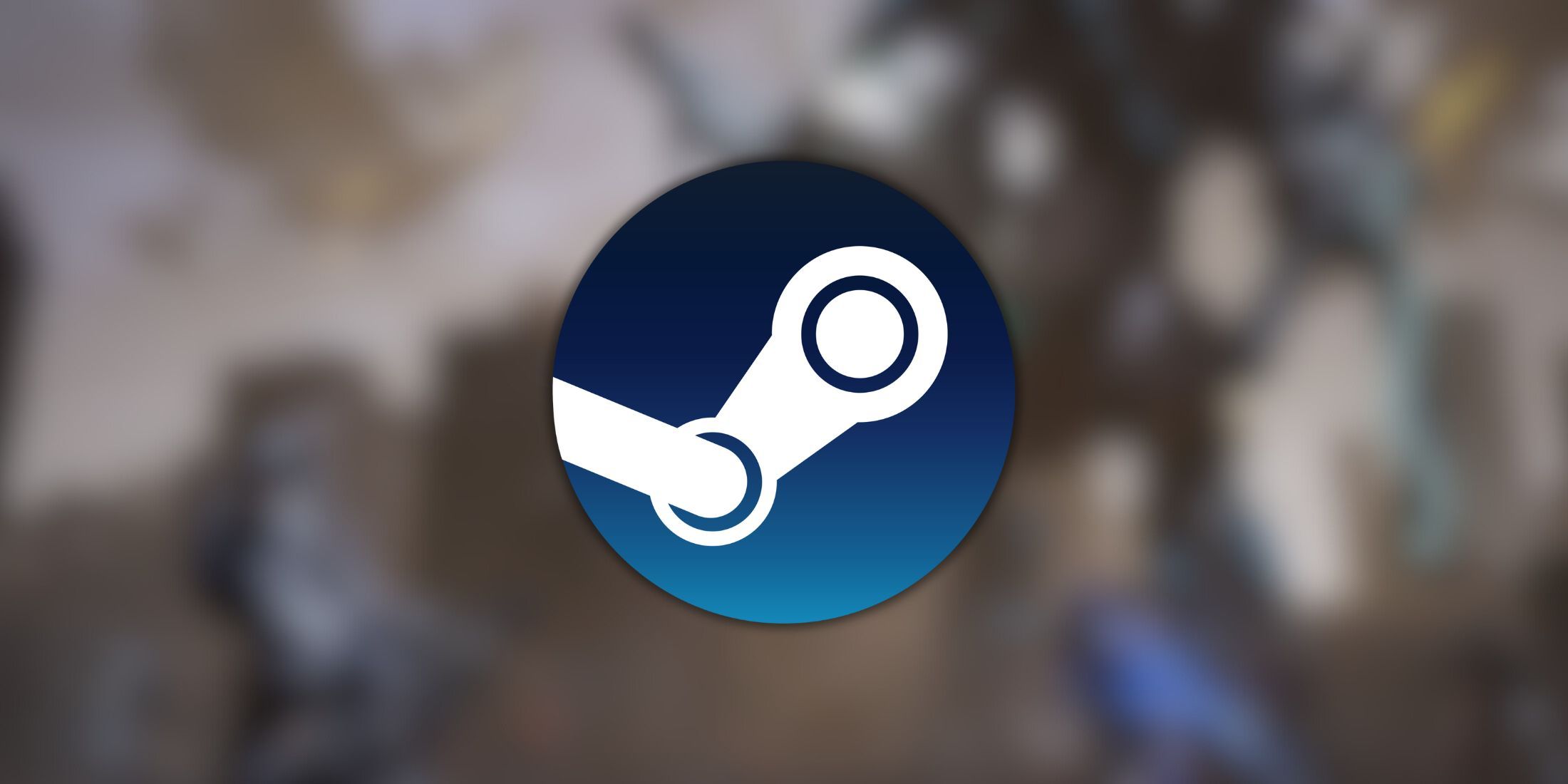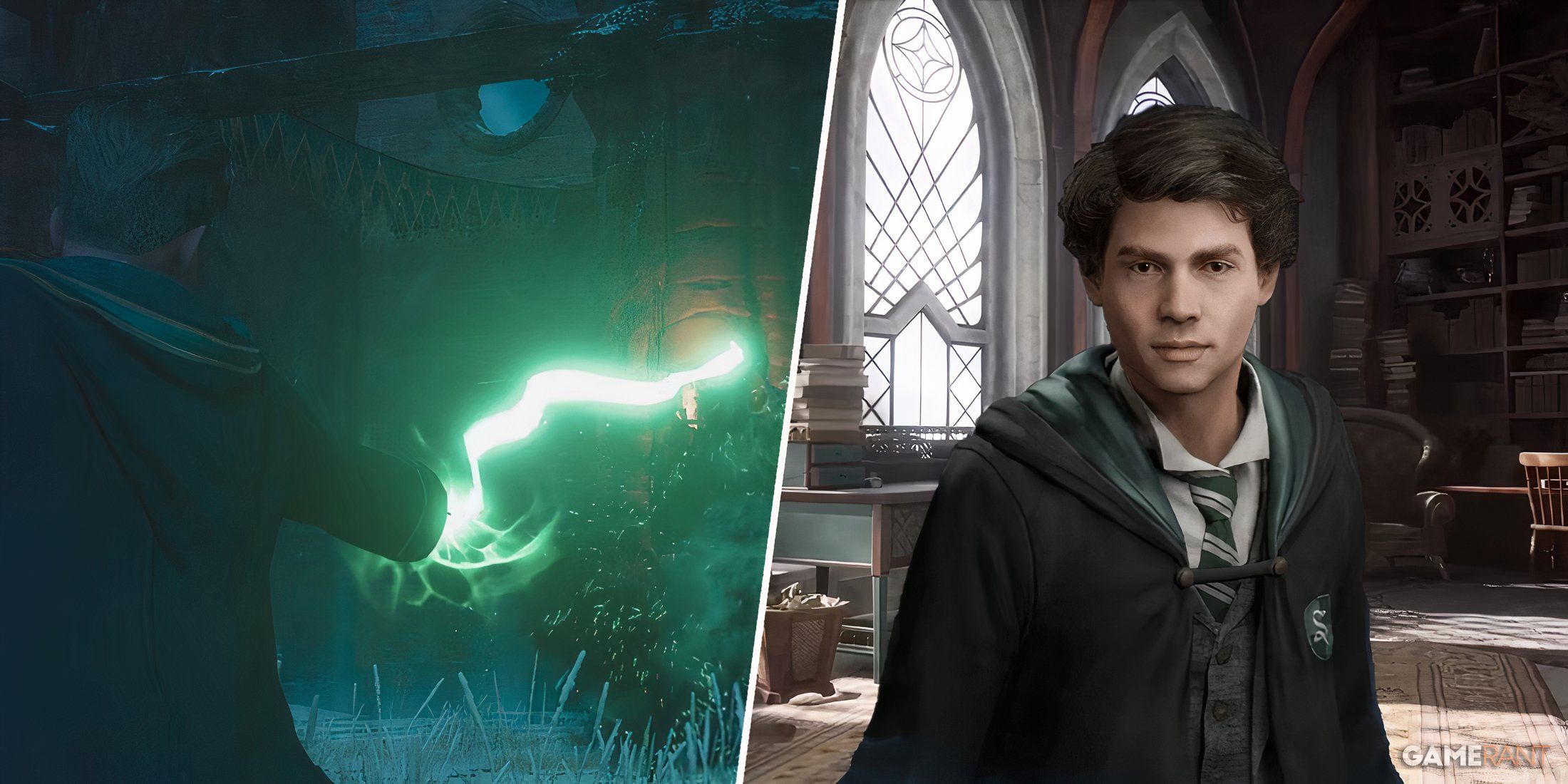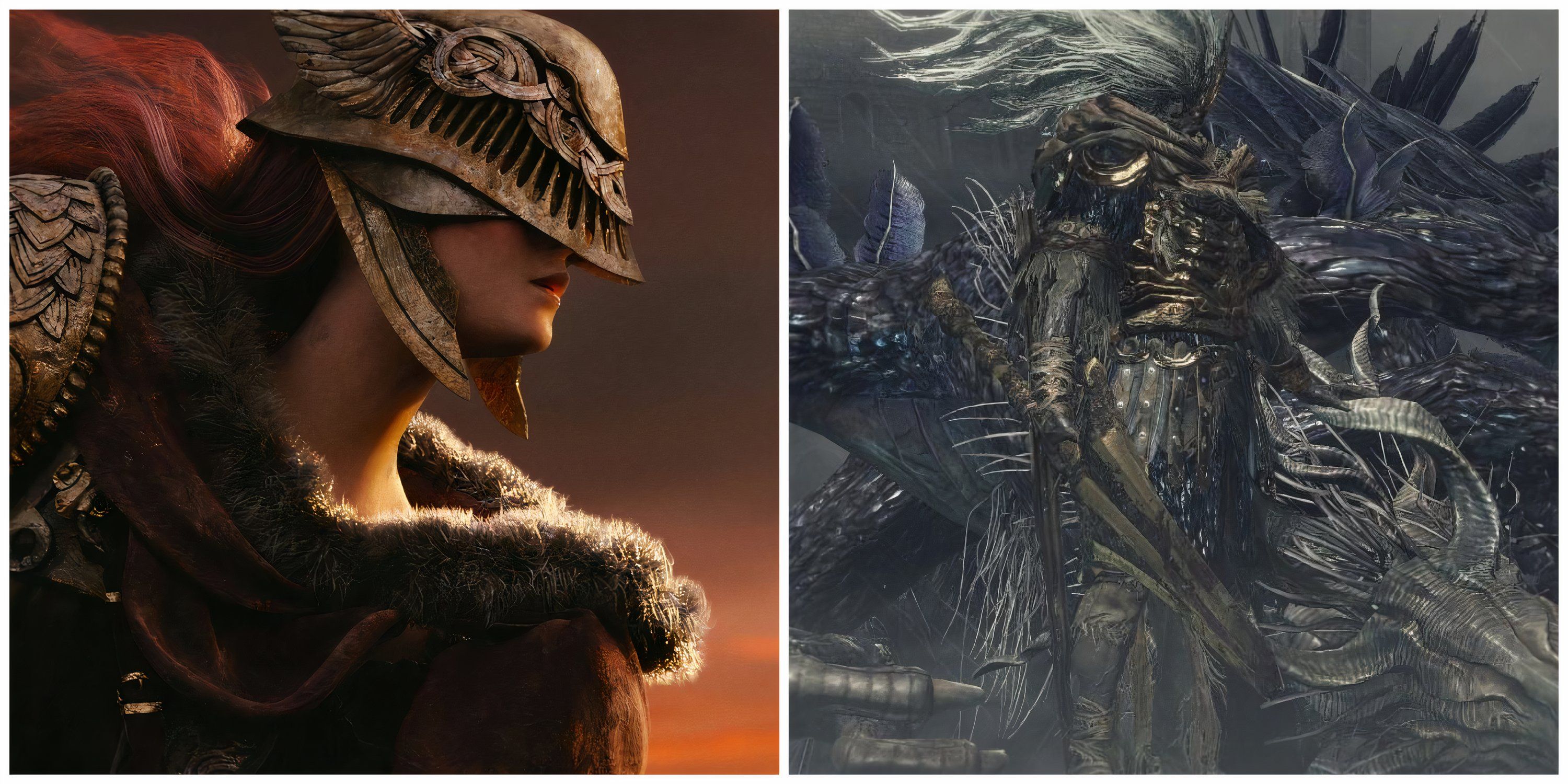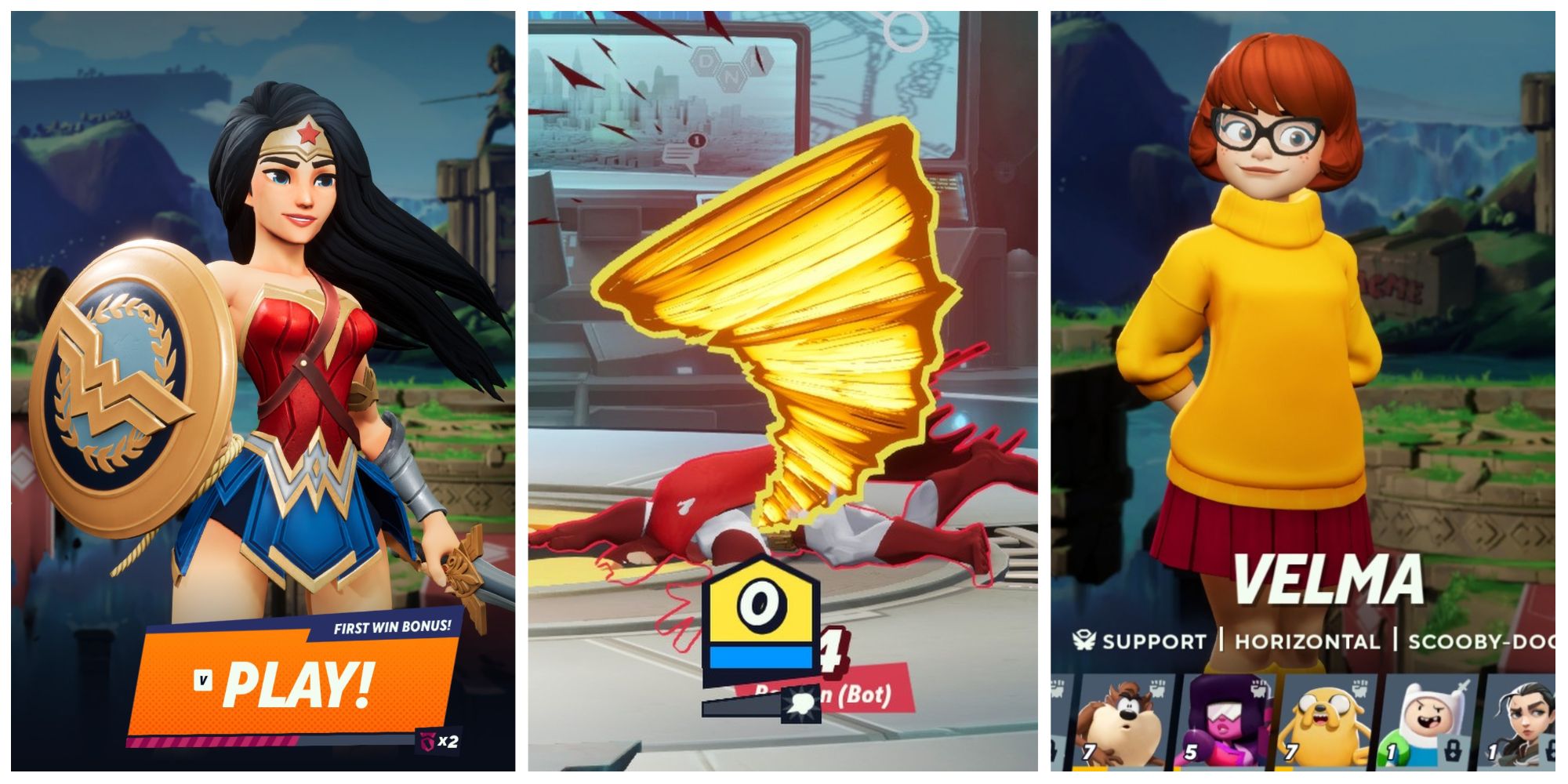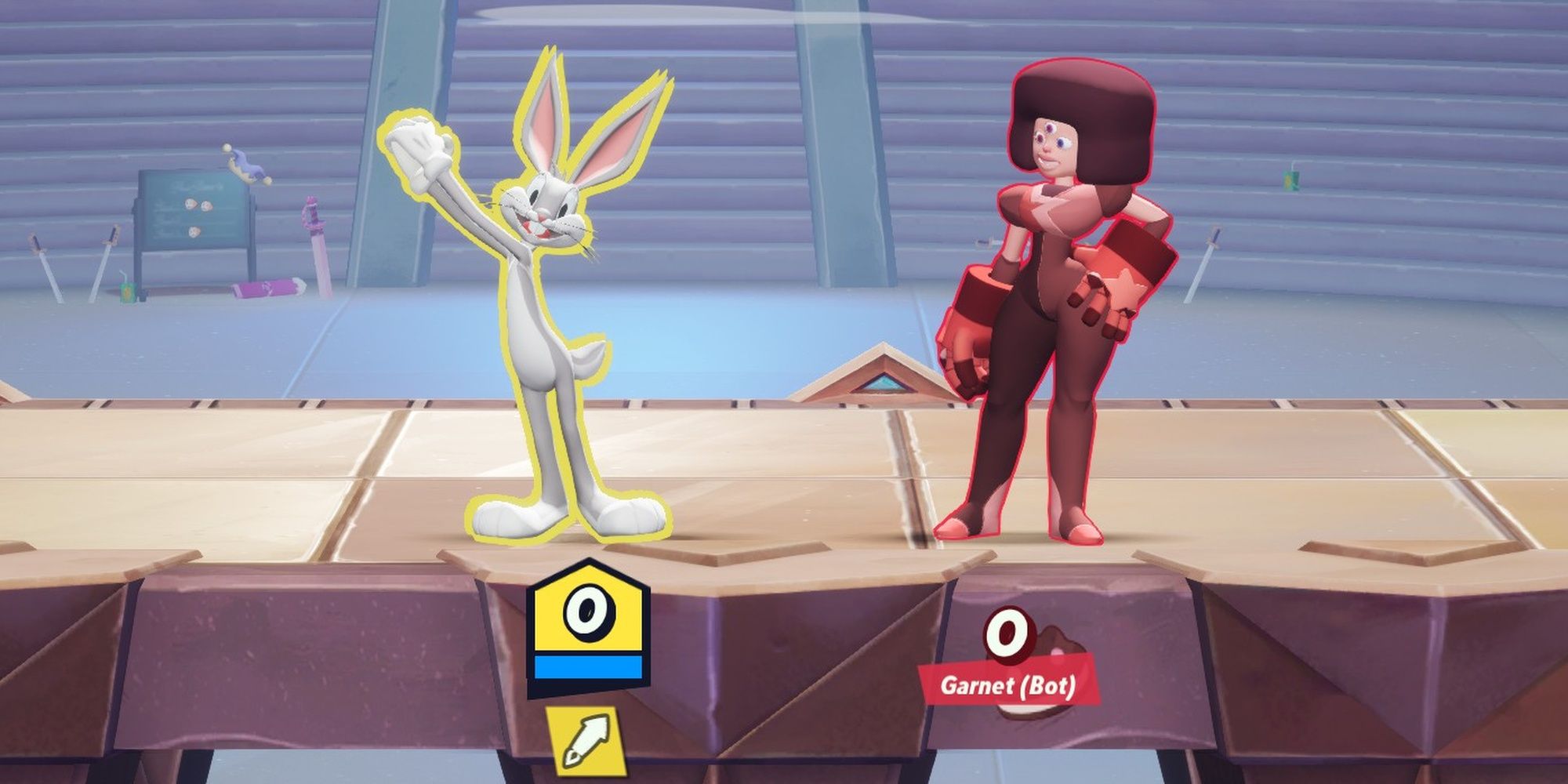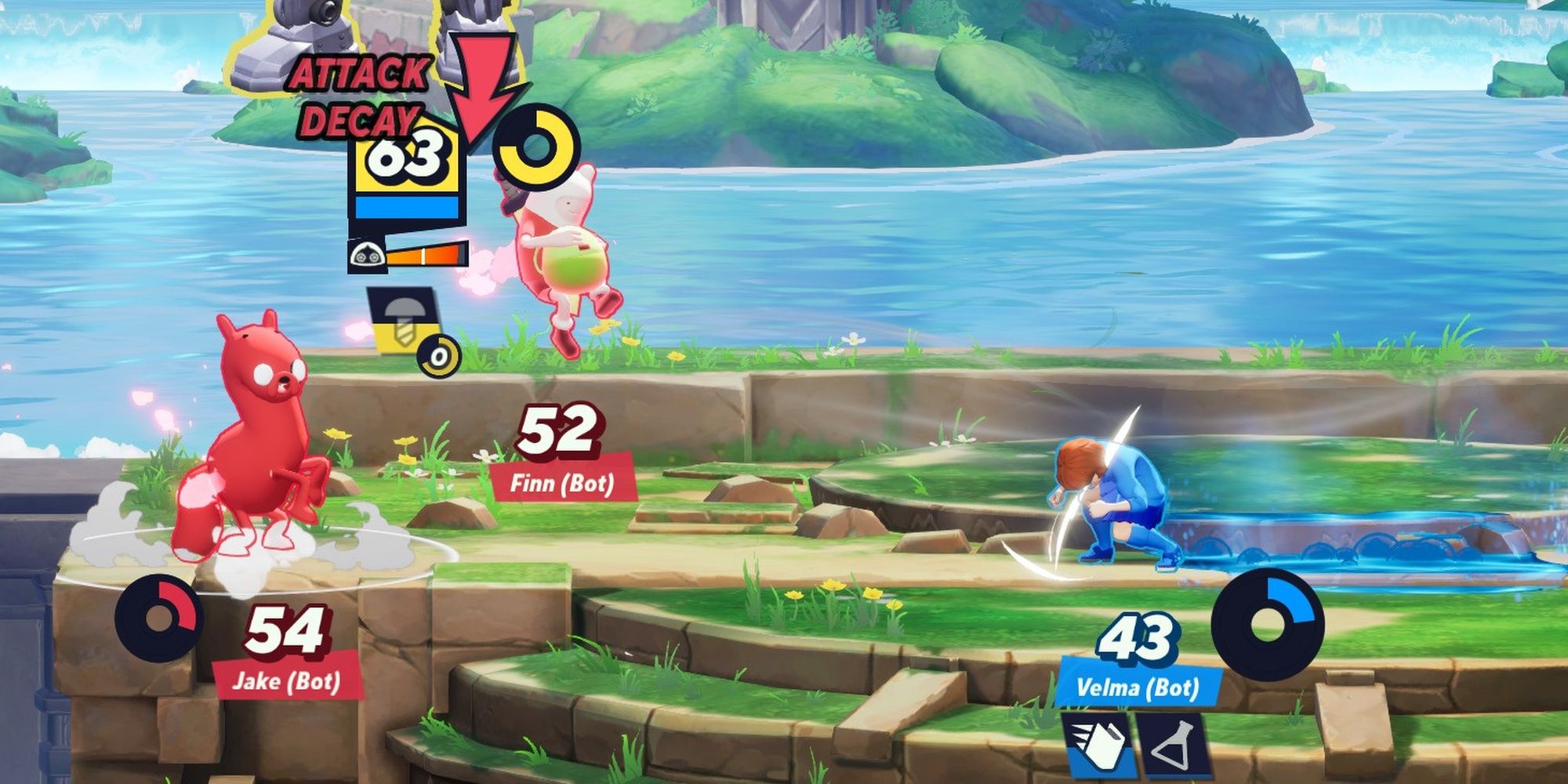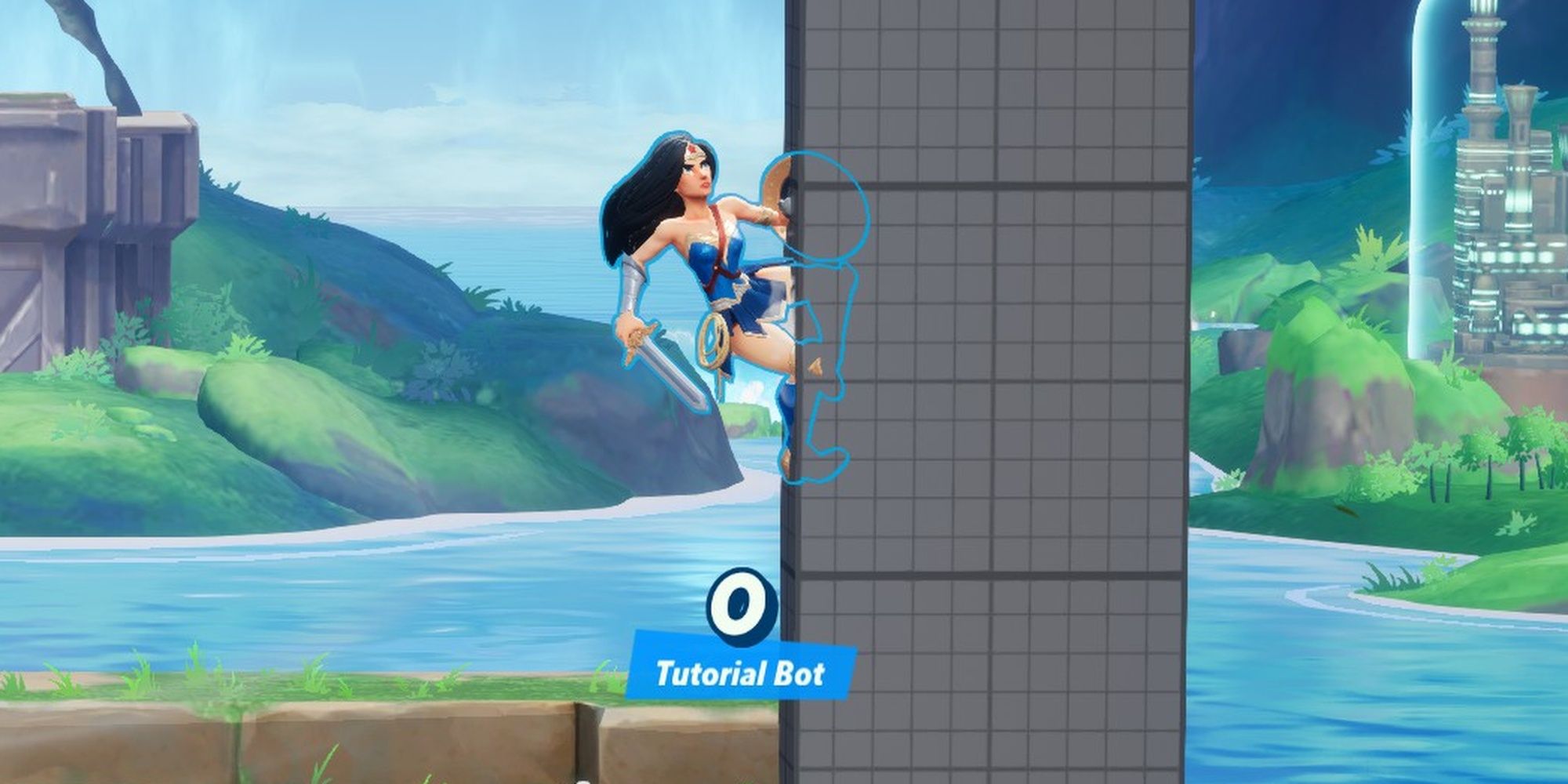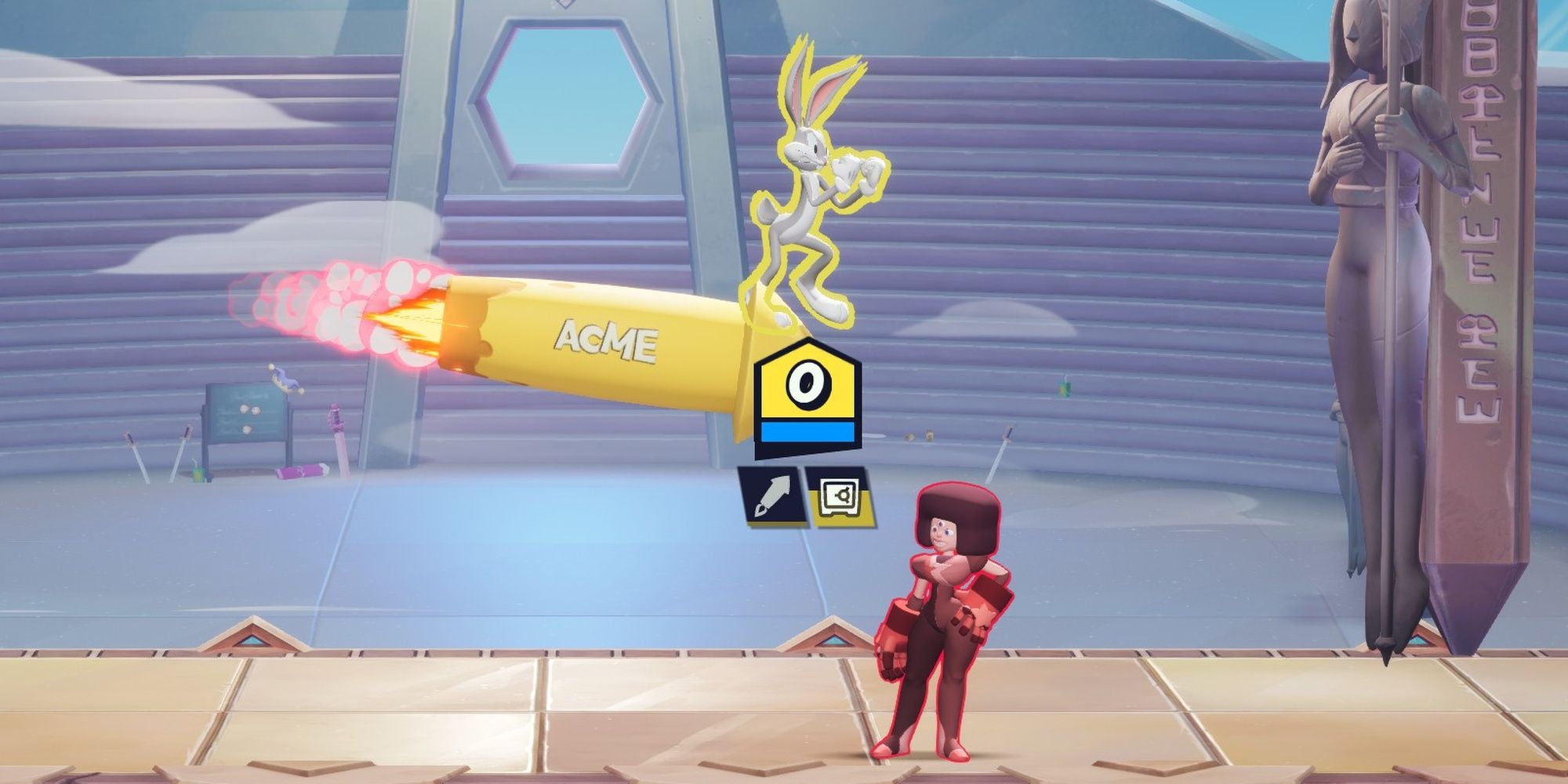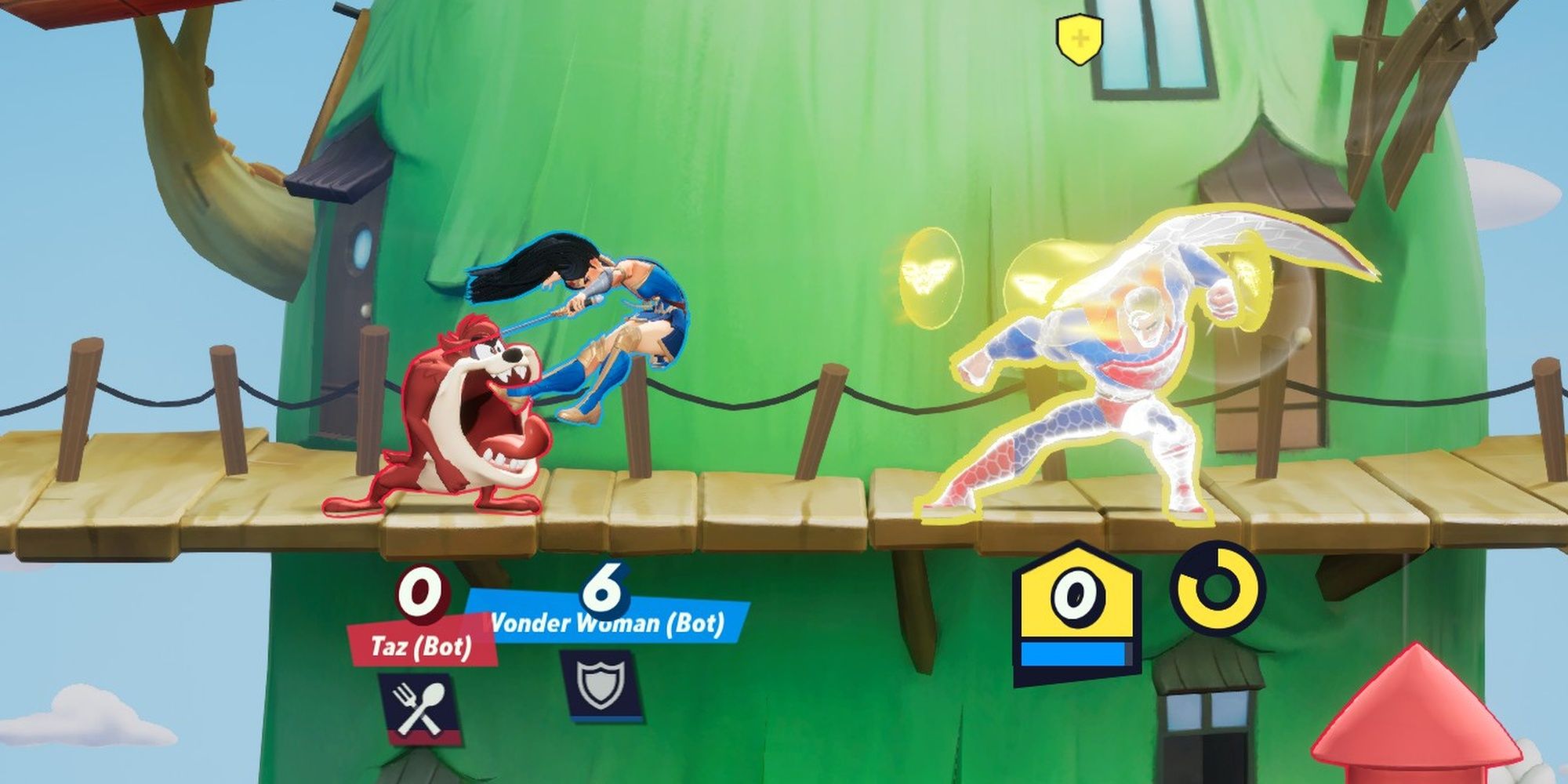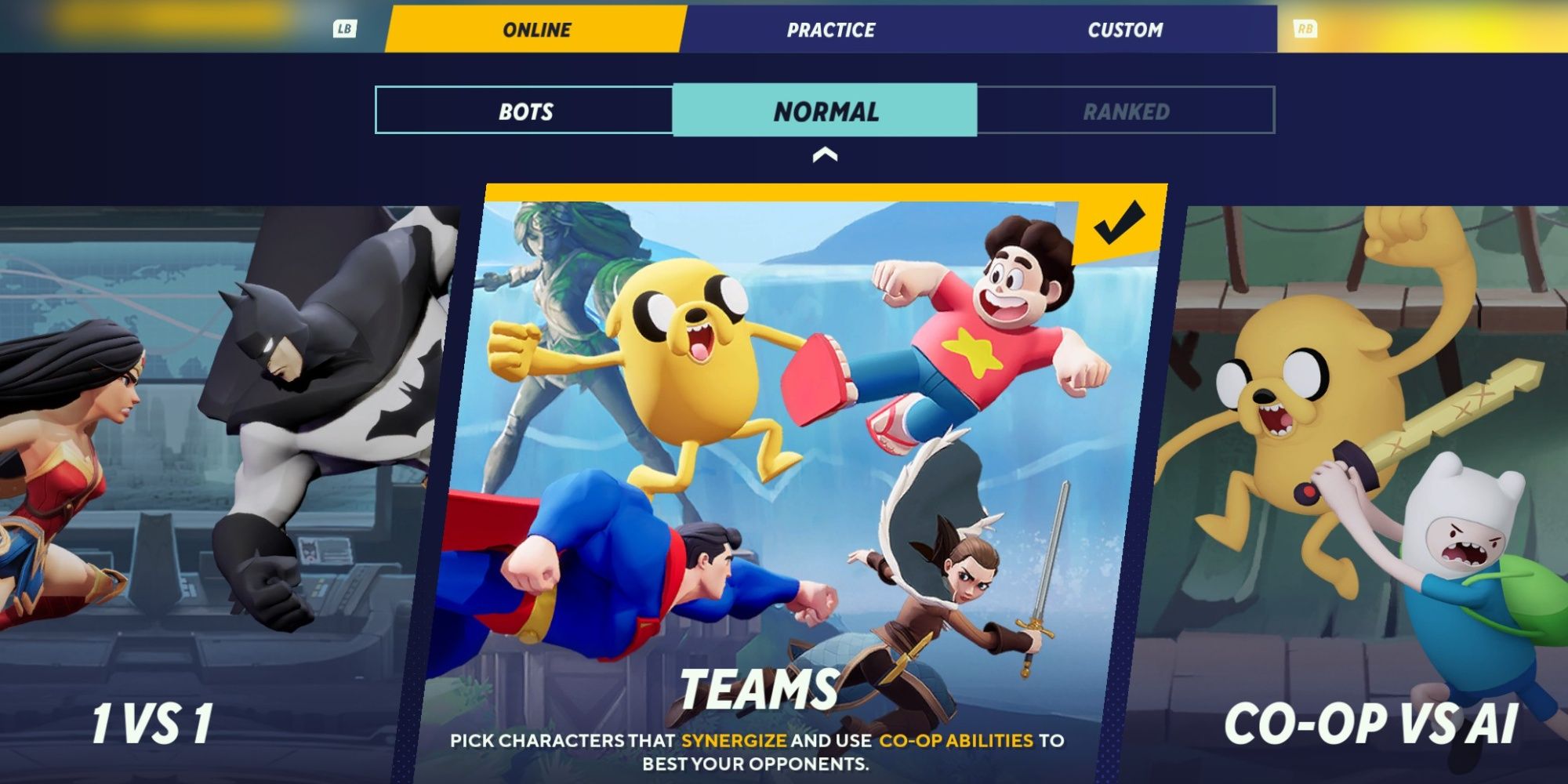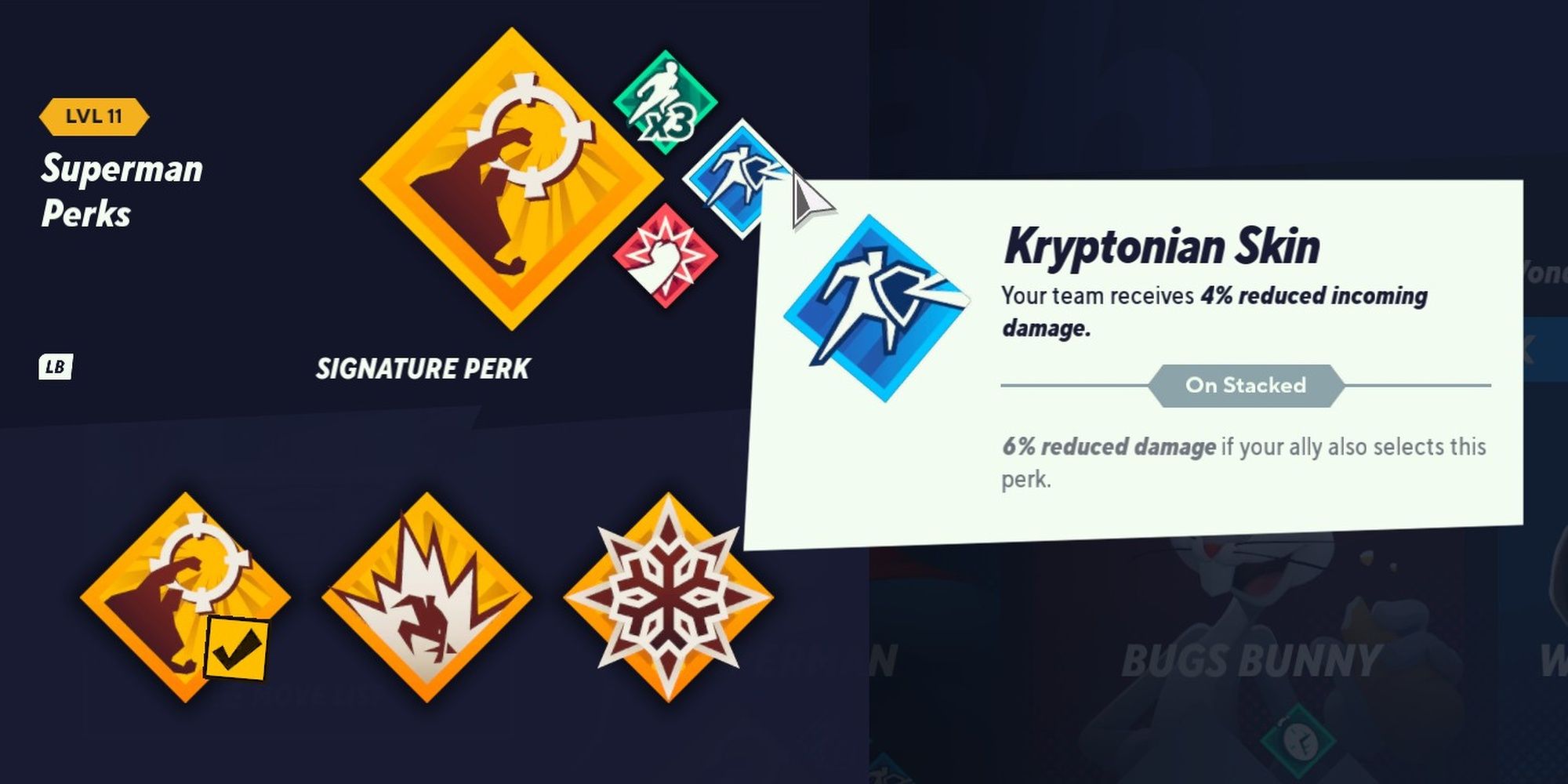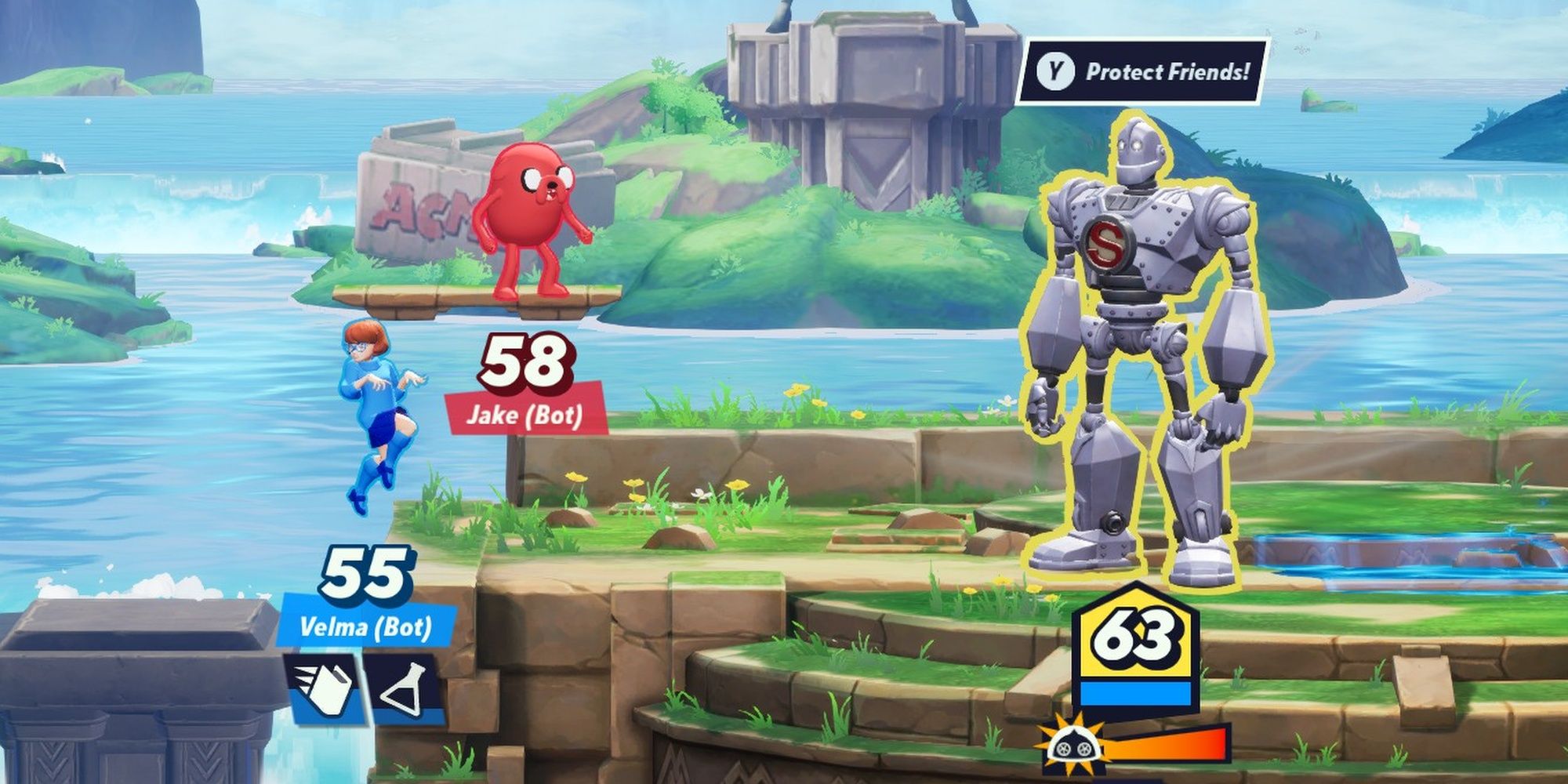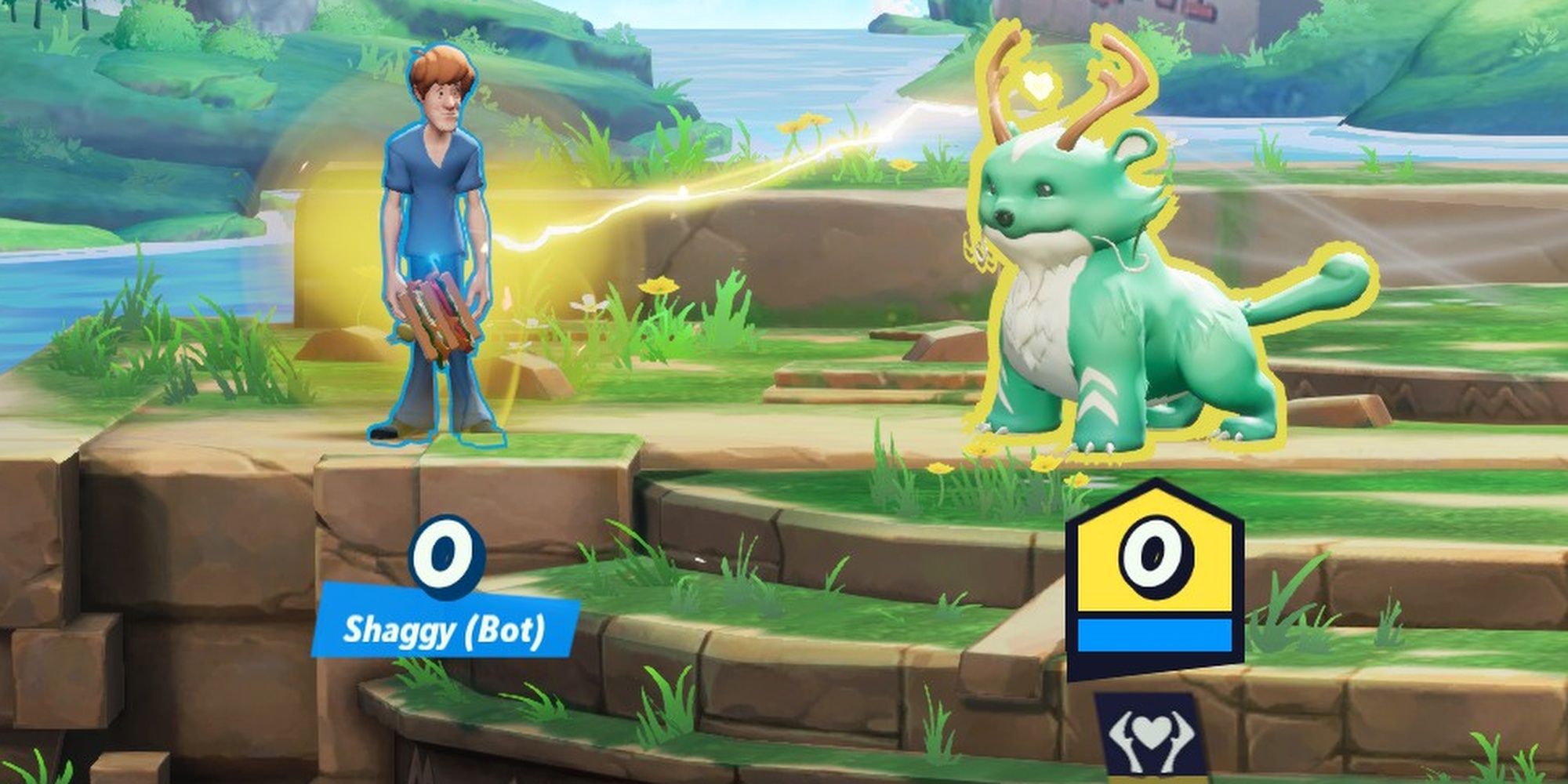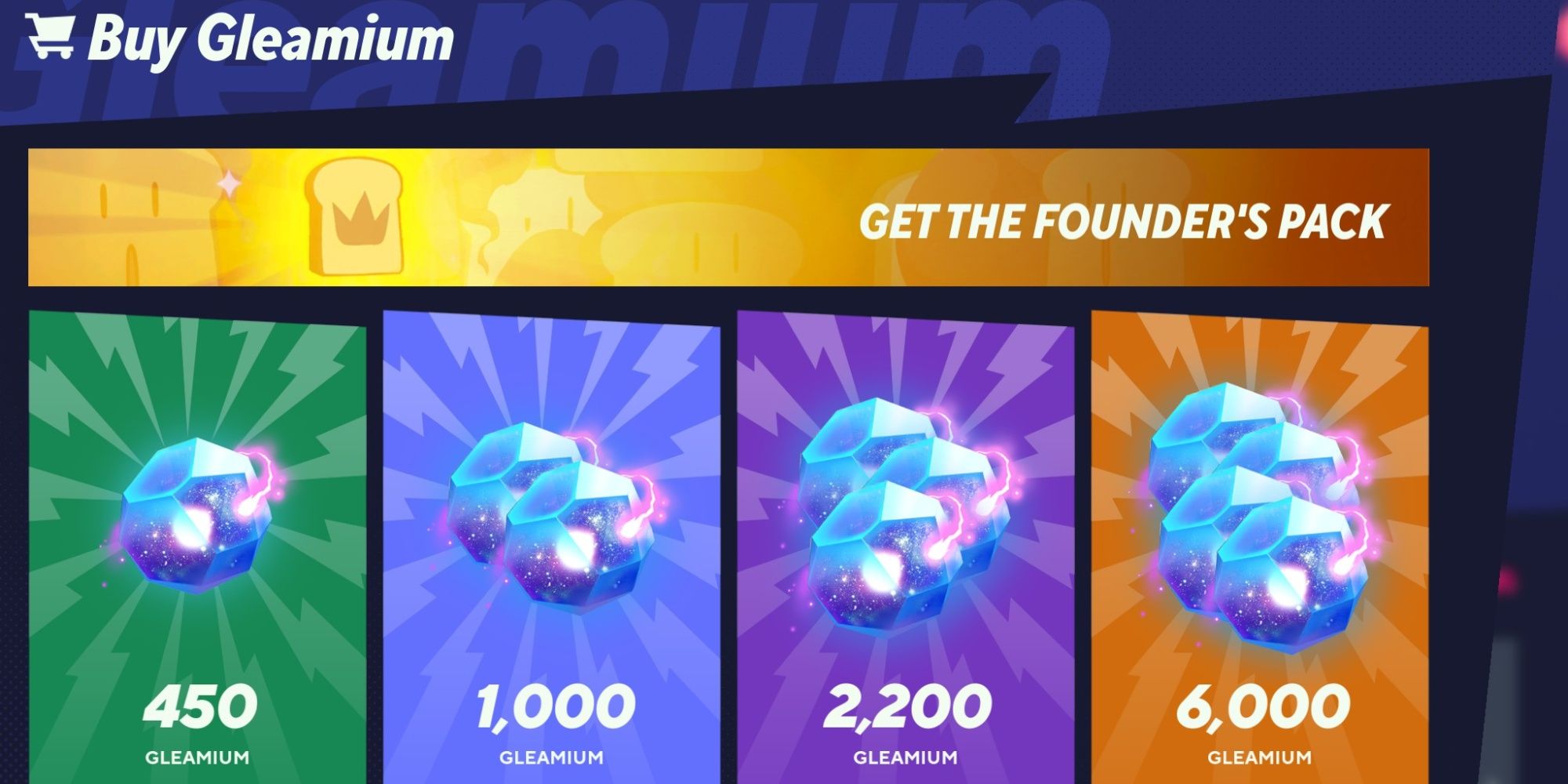MultiVersus, the platform fighter featuring a wide range of Warner Brothers properties, released into Open Beta recently. At a glance, it appears to be a WB-branded variant of Nintendo's Super Smash Bros. The game does have many close similarities to Smash Bros., which is understandable: Nintendo's signature platform fighter is beloved by fans across the globe, and boasts a level of quality that's tough to imitate.
Although MultiVersus and Smash Bros. are similar, their differences end up being extremely impactful. Several core elements of each game differ in significant ways, and the two games end up feeling substantially different. Not all of these differences are evident at first: here are ten major ones that end up having a huge impact in how MultiVersus is played.
10 Character-Specific Dialogue
A minor difference that nevertheless makes an impact. In several different situations: match start, ring out, respawn, and victory screen to name a few, the characters have specific voice lines depending on the situation.
Often, this manifests as taunts between characters. Defeated by Superman, Batman will remark he should have brought his Kryptonite. Seeing Arya Stark on match start, Bugs Bunny will accuse her of wearing animal furs. These might get old after a while, but they add a lot to the character of the game.
9 Attack Decay
In Smash Bros., this is referred to as "Stale Moves". When a character in either game uses the same attack too many times in a row, its power will decrease. When this happens in Smash, the effect is close to invisible. Players might not even know about it without checking the manual.
It's different in MultiVersus. Not only is the effect covered in the tutorial, but whenever it begins taking effect, there's an on-screen warning and sound effect both, impossible to ignore. The effects can be felt right away as well, and are a little tougher to remove since the pool of moves in MultiVersus is smaller than in Smash.
8 Wall Cling
The standard method of recovery in Smash Bros. is to grab the edge of the platform when returning. Doing so grants the grabber some brief invulnerability and a couple of getup options, but is a risky state. A lot of Smash offense revolves around guarding these grabbable edges.
In MultiVersus, however, the edge grabbing state doesn't exist. Instead, any character can hold against a wall, which automatically refreshes their jumps. Coupled with this, all stages in the game are supported by walls that stretch into the blast zone, so any character near the stage can easily recover - if not punished.
7 Double Air Mobility
On top of the wall cling mechanic, MutiVersus has another difference from Smash Bros. in terms of recovery. In Smash, most characters return to the stage with a midair jump, then an upward special. The default in MultiVersus, on the other hand, is two midair jumps, two air dodges, and two specials, which can all be used in any order.
In addition to the recovery options provided, all these jumps allow characters in MultiVersus to cross huge distances onstage as well. Air combat is greatly expanded. It's a little troublesome, though, to keep track of which of these many jumps are still available in an offstage situation.
6 No Blocking Or Grabbing
Similar to many traditional fighting games, Smash Bros. has a rock-paper-scissors interaction between moves: attack beats grab, block beats attack, grab beats block. MultiVersus does away with this staple. The only standard defensive option is a directional dodge, and there's no universal grab.
There are a few other interactions with a similar relationship. Closest is the prevalence of armored moves, and armor-break moves that ignore them. Most characters have a dedicated armor break, but it's only useful in certain matchups. Choosing characters to specifically counter others is much more common as a result.
5 Online Focused
It's true of Smash Bros. and also of Nintendo as a whole: the games are made for local multiplayer. It took Nintendo a while to embrace online gaming compared to other developers, and when they did, their services were worse than the rest. Online Smash Bros. has greatly improved since its introduction in Brawl, but it's still considered lacking.
Not so for MultiVersus, which is designed around online play first and foremost. It even has rollback netcode, the current yardstick for whether developers are trying to promote online play. The flip side is that MultiVersus has almost nothing besides online content, so unlike Smash, players who prefer single-player won't have a good time.
4 Perks
Earned on level up, these abilities can be equipped at the start of a fight to augment a MultiVersus character's stats. There are universal types, such as damage or speed increases, and character-specific ones, like one that triggers Shaggy's rage mode automatically. Their effects can be stacked, as well: if both teammates in a 2v2 equip the same perk, its effect is amplified.
Smash Bros. has experimented with similar systems in the past, starting in Brawl with sticker abilities and culminating in Smash 4 with fully customizable loadouts, including varying special attacks. In Smash, however, none of these systems were widely used, whereas in MultiVersus they take effect in every single match. Time will tell whether the playerbase will stick with them.
3 Character Classes
One of the stranger differences between games is MultiVersus' classification of its characters. They come in Bruiser, Assassin, Tank, Mage, and Support. The system is closer to League of Legends' hero classes than Smash Bros., in which no such description exists.
It's an interesting decision, and it helps reinforce the idea of 2v2 teamplay, where each person uses a character that compliments the other. There are pitfalls inherent in this kind of separation, though. It's not clear whether everyone is balanced for 1v1 as well, which even in MultiVersus is the only mode some people play. A more serious issue could crop up if, when the meta takes hold, certain characters or classes are considered must-have.
2 Support Abilities
The most interesting property of the MultiVersus characters compared to Smash Bros. is the inclusion of support abilities, moves that provide a benefit to a teammate in 2v2. "Support" characters tend to have several of these, but every character has at least one cooperative function. Bruiser-class Taz, for example, can apply a healing buff simply by moving past his teammate.
This sort of interaction is almost nonexistent in Smash Bros., and greatly emphasizes the 2v2 focus of MultiVersus, for better and for worse.
1 Free-To-Play
The biggest difference between the two games is their pricing model. The Smash Bros. games have all been one-time purchases, with later games introducing DLC. MultiVersus, as advertised, is free-to-play, with a battlepass and microtransactions. Adopting this model ends up affecting all areas of game design. To start with, its low barrier of entry allows lots of players access to the already accessible platform fighter.
Not all the players, however, can access all the content: while characters are purchasable with in-game gold, the rate at which gold is earned is already beginning to frustrate some players. Beyond this, gold is also used to acquire strength-boosting perks, and as usual almost all of the cosmetics require real money. In the end, the game is still new, so time will tell whether the microtransactions end up being too toxic.
MultiVersus is available in early access on PC, PS4, PS5, Xbox One, and Xbox Series X|S. Its Open Beta begins on July 26th.

